Our Crafts
For centuries, the Bhartiya economy has been deeply rooted in the rural heartlands of the country, with art and craft forming an integral part of the culture. However, due to industrialization and globalization, these traditional crafts have declined significantly, and the number of artisans is dwindling. Shramdaan is a ray of hope in such a scenario, aiming to revive and sustain these crafts. Below is a glimpse of the crafts practiced by Shramdaan artisans:
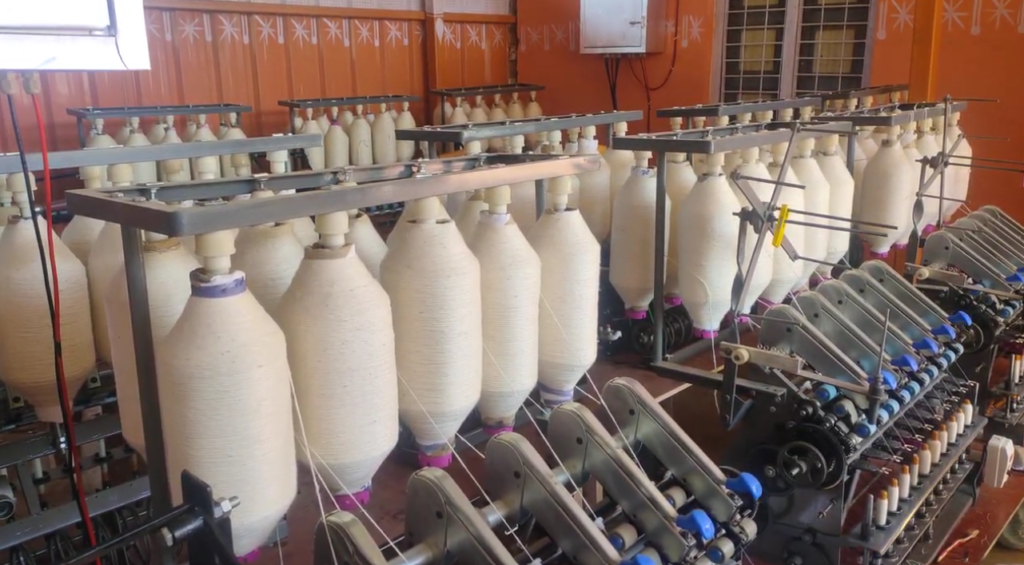
The spinning of Khadi yarn is the initial step in creating Khadi products. This involves twisting strands of cotton fibers to form yarn, with drafting, twisting, and winding completed in one seamless operation.

Using looms with multiple shafts, this technique allows for the creation of intricate artistic and decorative patterns. A basic loom with two shafts produces simple fabric, while additional shafts enable more complex designs.
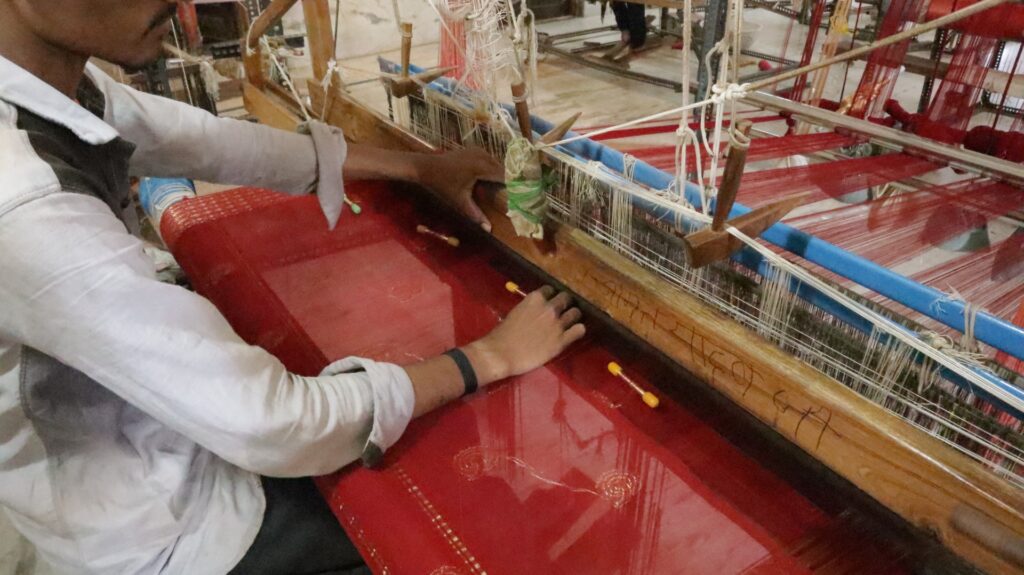
Buti is a technique where decorative patterns are embossed onto the fabric’s texture. This involves weaving a ground cloth with one weft yarn and adding an additional weft at intervals to create beautiful designs.

Jacquard weaving integrates intricate patterns directly into the fabric, rather than being embroidered. This technique is used to create elegant and aesthetically appealing sarees with smooth textures.
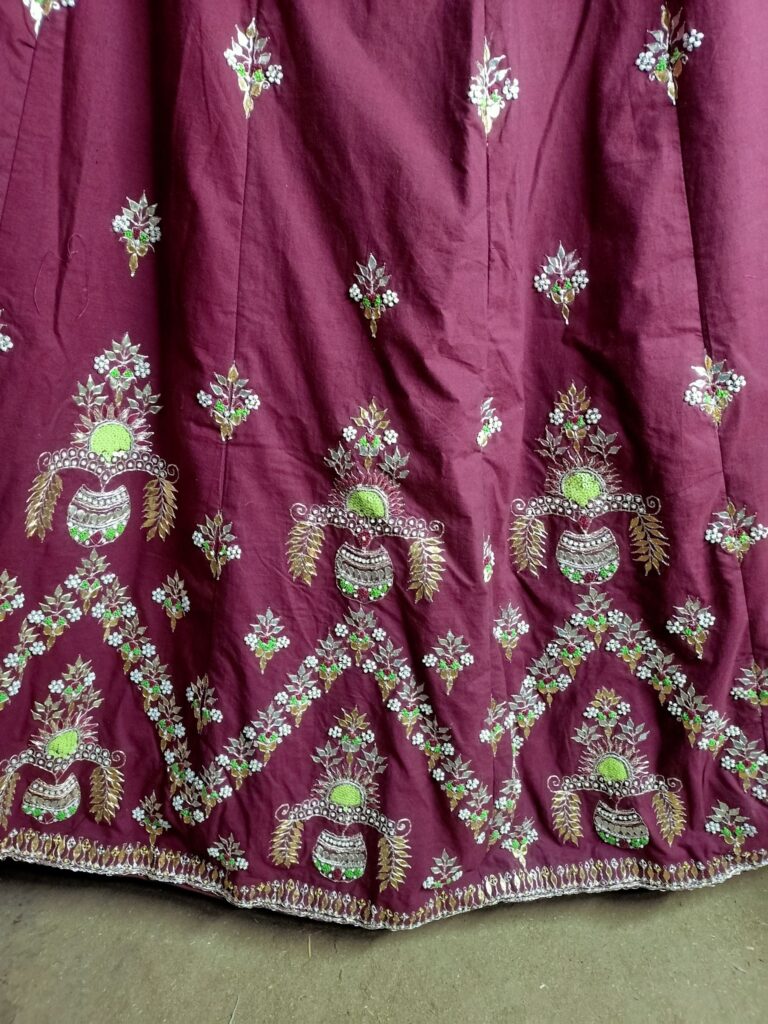
Zardozi is a regal form of metal embroidery, involving metallic-coated threads to create intricate and elaborate designs on fabric. This art adds a royal touch to garments and accessories.
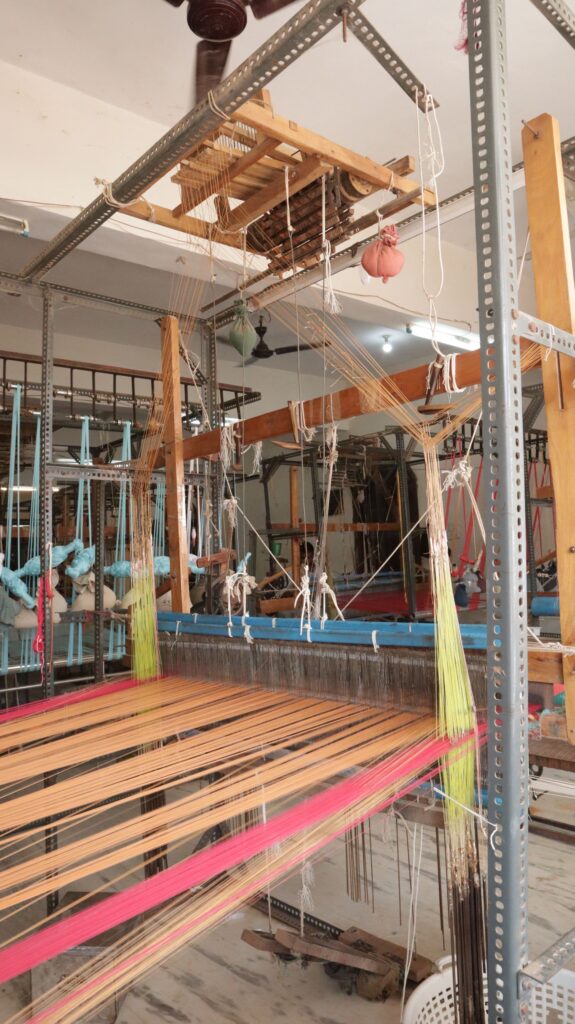
A dobby is a shedding device placed on top of a loom to enhance its design capacity. This technique is often used to create patterns in borders of sarees, dhotis, dupattas, and other lightweight textiles.
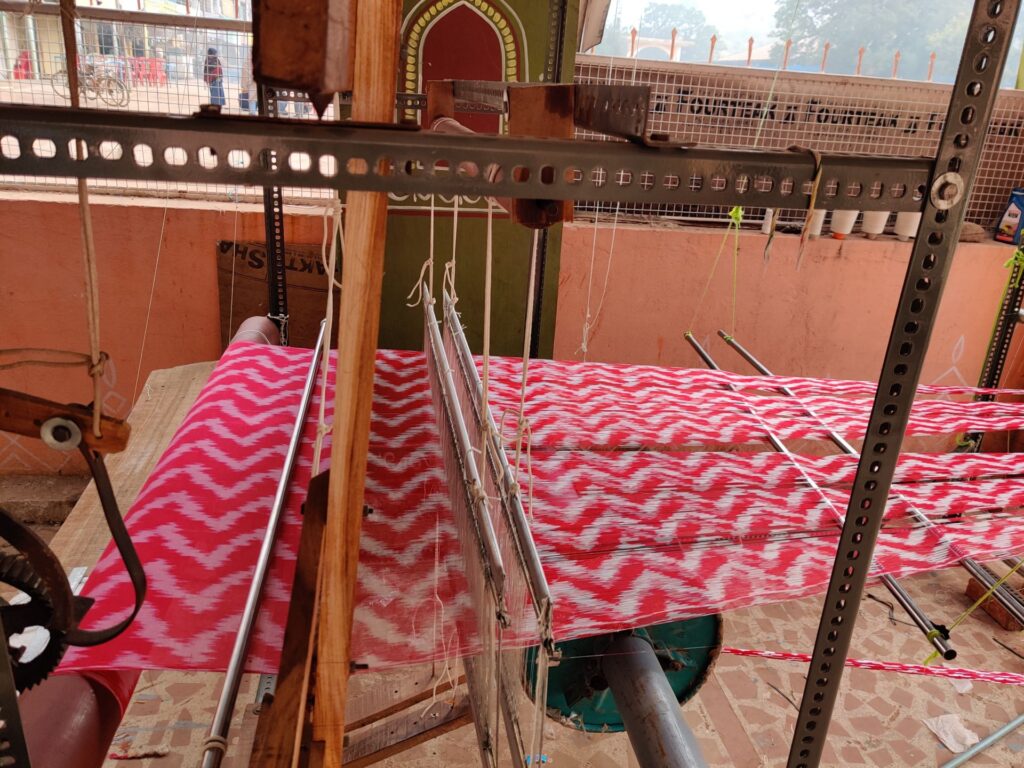
Ikat is a resist-dyeing technique used to create distinct textile patterns. In this process, sections of yarn are dyed prior to weaving, producing intricate and unique designs. Shramdaan artisans have learned and implemented ikat techniques from traditional craftsmen in Andhra Pradesh.

Kundalpuri sarees feature vibrant depictions of popular folk tales and legends, such as the establishment of the grand Jinbimb of Bade Baba and the story of Bundelkhand Emperor Kshatrasal’s promise to renovate Bade Baba’s temple. Historical symbols and motifs, inspired by ancient Jain idols and regional flora, are intricately woven into these sarees.
